Novel MR & MR-Compatible Technology
Novel MR & MR-Compatible Technology
Oral
Oral
Engineering
Monday, 13 May 2019
| Room 512A-H | 16:00 - 18:00 | Moderators: Clarissa Cooley, Suryanarayana Umesh Rudrapatna |
| 16:00 |
0267. 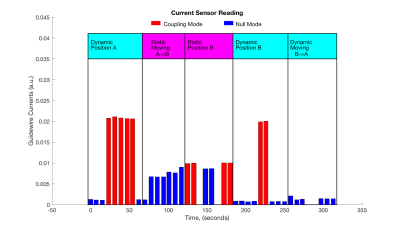 |
Auxiliary PTx system for active control of induced RF currents in conductive guidewires
Felipe Godinez, Joseph Hajnal, Shaihan Malik
The risk of RF-induced currents makes use of electrically conductive guidewires for cardiac catheterization procedures potentially unsafe for MRI. By using a parallel transmit coil array (PTx) system it is possible to generate RF field modes that can be utilized for safe imaging, and also guidewire visualization. As the induced RF currents can change with the guidewire position and operator handling, the control modes become a moving target. In this work we present an actively controlled PTx system that enables safe operation during a procedure in which electrical conditions are changing, and demonstrate this experimentally.
|
| 16:12 |
0268. 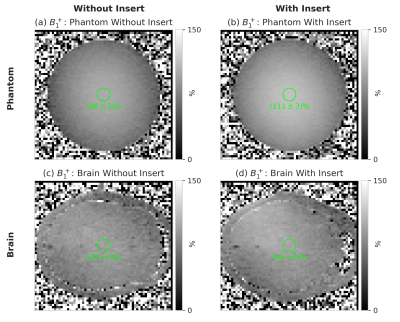 |
RF transparent ultrafast gradient insert
Dennis Klomp, Edwin Versteeg, Riccardo Metere, Andrew Webb, Erik Van den Boogert, David Norris, Matrino Borgo, Jeroen Siero
Ultrafast gradient insert coils can boost EPI performance when designed as an independent 4th gradient chain. However, at high operating frequencies, substantial eddy currents will be generated in the shields of RF coils. Here we show that RF shields can be removed without compromising MRI performance yet enabling two orders of magnitude increased gradient efficiency at high frequency.
|
16:24 |
0269. 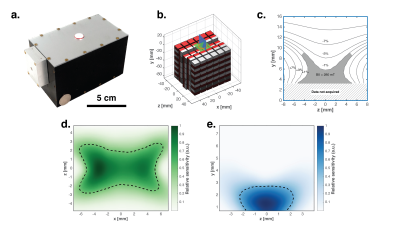 |
Portable, single-sided magnetic resonance sensor for hydration status assessment via multicomponent T2 relaxometry
Ashvin Bashyam, Chris Frangieh, Michael Cima
Undiagnosed dehydration compromises health outcomes across many populations including the elderly, infants, soldiers and athletes. Here we introduce a miniature (~1000 cm3), portable (~4 kg), single-sided magnetic resonance (MR) sensor capable of identifying and quantifying fluid loss induced by dehydration. Multicomponent T2 relaxometry of skeletal muscle tissue enables the measurement of distinct fluid compartments. We first quantify fluid loss induced by dehydration with multicomponent T2 relaxometry using a standard MRI. We then extend these findings and demonstrate a portable, low-field MR sensor exhibits comparable performance via a similar measurement while offering significantly reduced sensor mass, measurement time, and system complexity.
|
16:36 |
0270 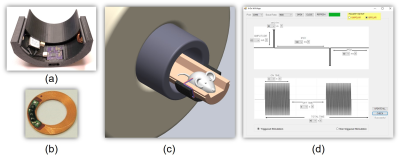 |
MRI Powered and Triggered Current Stimulator for Concurrent Stimulation and MRI Video Permission Withheld
Ranajay Mandal, Nishant Babaria, Jiayue Cao, Kun-Han Lu, Zhongming Liu
The integration of stimulation, recording and high-field MRI has significant potential to evaluate different organs (brain, heart, gut etc.). However, externally powered devices consisting of cables and connectors for powering and synchronization may perturb the magnetic field within the MRI system and create additional safety concerns at high-fields. Here we present an MRI powered and triggered system, namely X-ON, to deliver electrical stimulation during MRI operation. The MR-compatible system can harvest wireless energy from varying gradient fields and provide programmable current stimulation in synchronization with MRI or fMRI acquisition.
|
16:48 |
0271. 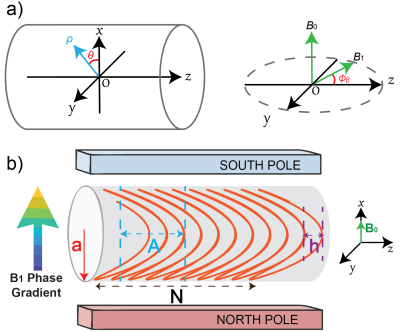 |
High Resolution TRASE by Rapid Echo Encoding with Twisted Solenoid RF Phase Gradient Coils
Hongwei Sun, Aaron Purchase, Abbas AlZubaidi, Pallavi Bohidar, Gordon Sarty, Boguslaw Tomanek, Jonathan Sharp
TRASE is an MRI k-space encoding method that uses radio-frequency transmit phase gradient fields to achieve millimeter-level spatial resolution. To avoid resolution loss, the total echo train duration should be less than 1.2 times T2. However, previously demonstrated TRASE experiments have been limited by a large echo spacing (~1100 us). Here we present the use of the twisted solenoid to achieve short echo spacing of ~370 us, while remaining within SAR limits. This rapid echo encoding will enable in vivo imaging of short T2 tissues (e.g. ~50ms T2 for muscle at 0.2T) with resolution of 1.2 mm per pixel.
|
17:00 |
0272. 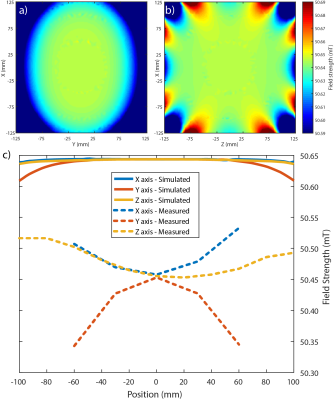 |
The design of a homogenous large-bore Halbach array for low field MRI
Thomas O'Reilly, Wouter Teeuwisse, Lukas Winter, Andrew Webb
The homogeneity of cylindrical Halbach arrays for low-field MRI is compromised by the finite length and discretisation into individual magnets. In this work we design and construct a large-bore Halbach array intended for imaging hydrocephalus in young children. The magnet is constructed using 23 double-layer Halbach rings with layer radii optimised for homogeneity. Simulated magnetic field strength and homogeneity over a 20cm spherical volume are 50.64mT and 433ppm, respectively. The homogeneity of the realised Halbach array is slightly degraded compared to simulations, but is sufficiently high to allow the use of conventional spatial encoding methods on such a system.
|
| 17:12 |
0273. 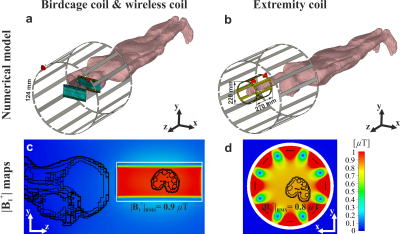 |
Wireless coil as a portable and practical alternative to a dedicated transceive coil for extremities MRI at 1.5T
Alena Shchelokova, Georgiy Solomakha, Ekaterina Brui, Anna Mikhailovskaya, Irina Melchakova, Anna Andreychenko
We show for the first time that a metamaterial inspired, volumetric wireless coil demonstrates similar performance as the same size, cable-connected volume transceiver coil for extremities MRI at 1.5T. Numerical analysis and in vivo human wrist imaging with the wireless coil showed proper quality images with no
|
17:24 |
0274. 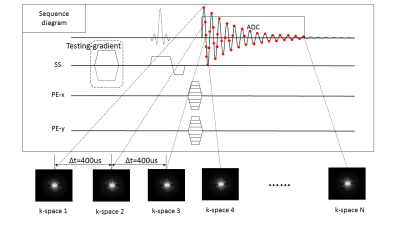 |
MRI with Sub-Millisecond Temporal Resolution: An Example Employing Spatially Resolved Eddy Current Characterization
Zheng Zhong, Muge Karaman, Xiaohong Zhou
Increasing the temporal resolution has been a major motivation for MRI technical development. Despite considerable progress, the presently achievable temporal resolution of MRI is limited to tens of milliseconds. We report a novel MRI technique, which we call Sub-Millisecond Imaging of cycLic Event (SMILE), that is capable of capturing periodic processes with sub-millisecond resolution. This technique is demonstrated by employing an example of characterization of eddy currents with short time constants.
|
| 17:36 |
0275. 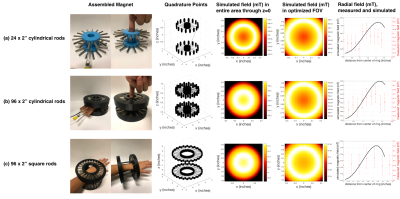 |
Equivalent-Charge-Based Optimization of Spokes-and-Hub Magnets for Hand-Held and Classroom MR Imaging
Irene Kuang, Nicolas Arango, Jason Stockmann, Elfar Adalsteinsson, Jacob White
Differentiating the potential from end-cap equivalent charges is so efficient at computing fields from bar magnets, that in less than minute, a laptop running MATLAB can computationally-optimize field uniformity in hundred-bar wagon-wheel (or spokes-and-hub) magnets. And optimized spokes-and-hub magnets have several advantages for hand-held and classroom low-field single-slice MR imaging (50-200 mT). Their frame is open, and they are easily assembled and scaled. We demonstrate several such magnets, from finger to wrist to infant size, and match magnetic field measurements to quadrature-based equivalent-charge simulation. We also demonstrate generating spin echoes using a spokes-and-hub magnet in a 200 mT tabletop imager.
|
17:48 |
0276. 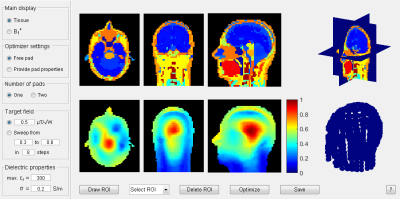 |
A Fast and Easy-to-Use Tool for designing High-Permittivity Pads for 3T Body and 7T Neuroimaging Applications
Jeroen Gemert, Wyger Brink, Andrew Webb, Rob Remis
High-permittivity pads have proved effective for addressing B1+ inhomogeneities for neuroimaging at 7T and body imaging at 3T. In contrast with the ease of constructing these pads, obtaining an appropriate design involves sophisticated and time-consuming electromagnetic field simulations, meaning that in many applications this technique is not fully exploited. We have therefore developed an easy-to-use software tool which can be run on a standard desktop PC to design dielectric pads for 3T body and 7T neuroimaging applications.
|
 Back to Program-at-a-Glance |
Back to Program-at-a-Glance |  Back to Top
Back to Top